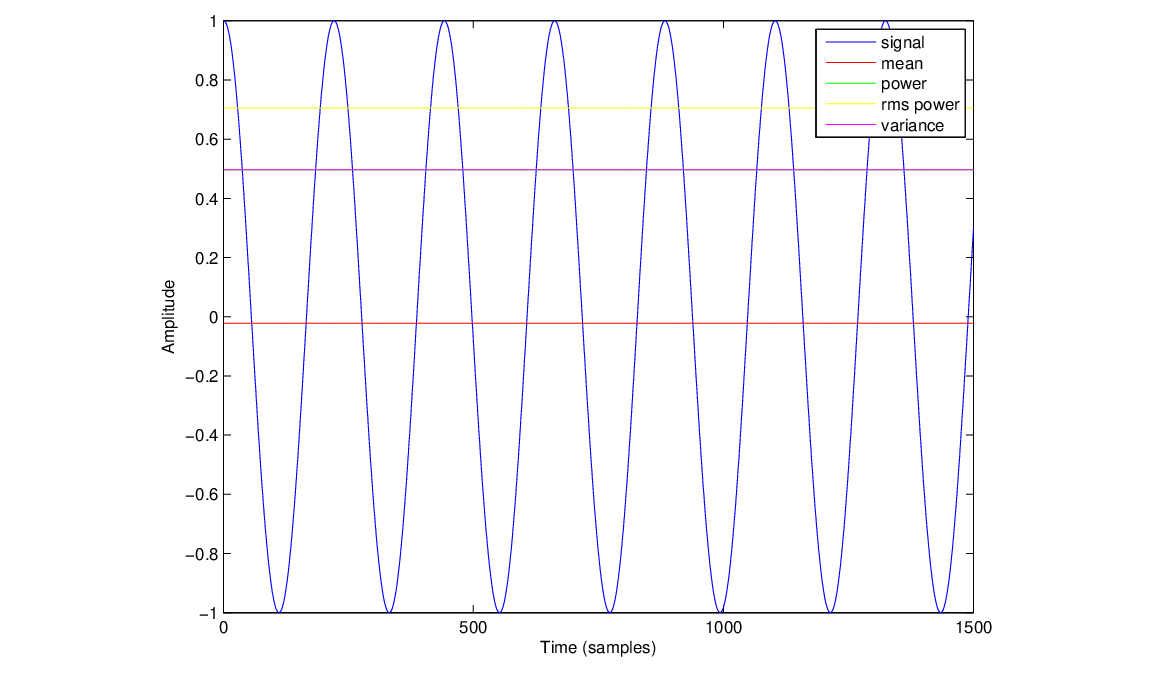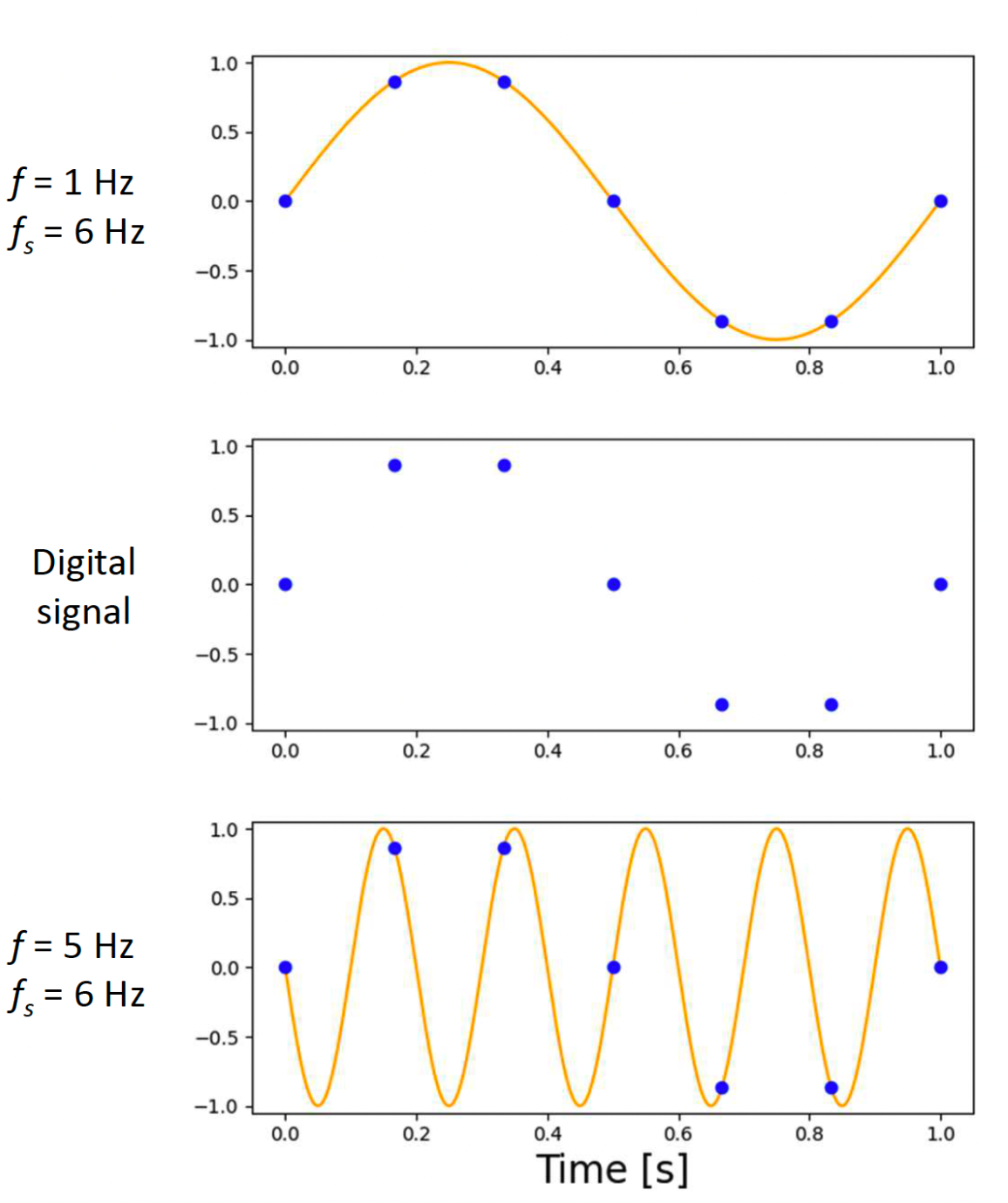Next: Signal Amplitude Units Up: Discrete-Time Signals, Amplitude and Frequency Previous: Discrete-Time Signals, Amplitude and Frequency

 is the peak amplitude,
is the peak amplitude,
 is the radian frequency,
is the radian frequency,  is frequency in Hz, and
is frequency in Hz, and  is the initial phase of the sinusoidal signal.
is the initial phase of the sinusoidal signal.
 .
.
 in continuous-time expression, where
in continuous-time expression, where  is the sampling time interval or period and
is the sampling time interval or period and
 (integers). A sampled sinusoid will then have the form:
(integers). A sampled sinusoid will then have the form:
![$\displaystyle x[n] = x(nT_{s}) = A \cos(\omega n T_{s} + \phi) = A \cos(\hat{\omega} n + \phi)
$](img14.png)
 is the normalized radian frequency.
is the normalized radian frequency.
 can be exactly reconstructed from its samples
can be exactly reconstructed from its samples
![$x[n] = x(n T_{s})$](img17.png) if the samples are taken at a rate
if the samples are taken at a rate
 that is greater than two times the highest frequency component in the signal.
that is greater than two times the highest frequency component in the signal.
 will “alias”.
will “alias”.


| ©2004-2025 McGill University. All Rights Reserved. Maintained by Gary P. Scavone. |